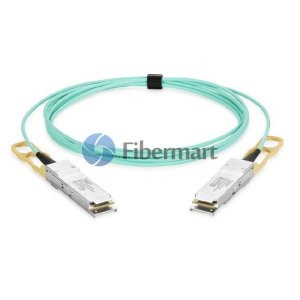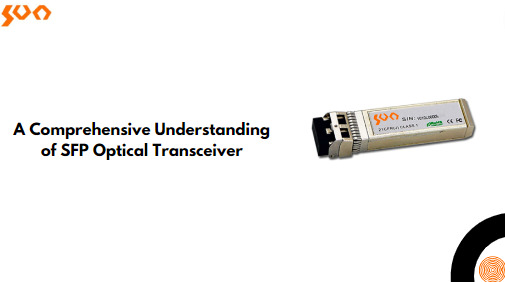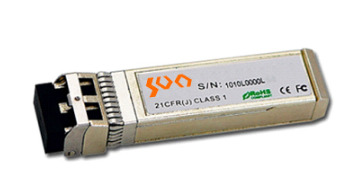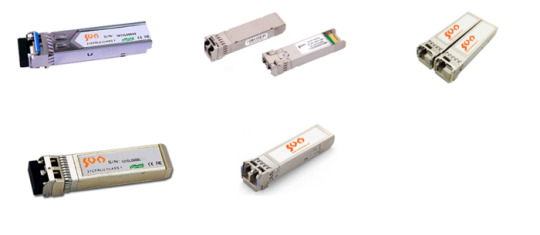#DWDM SFP+ Transceivers
Explore tagged Tumblr posts
Text
Optimize Data Transmission with DWDM SFP Transceivers: Revolutionizing Connectivity
In today's fast-paced digital world, data transmission is at the heart of every technological advancement. Whether you're a business relying on seamless communication networks or an individual seeking high-speed internet, the demand for efficient and rapid data transmission has never been higher. This surge in demand has paved the way for cutting-edge solutions, one of which is DWDM (Dense Wavelength Division Multiplexing) SFP (Small Form-Factor Pluggable) transceivers. These tiny devices are revolutionizing the way data is transmitted, making networks faster, more reliable, and capable of handling enormous amounts of data traffic.
At isp-home.com, we understand the critical role that DWDM SFP transceivers play in optimizing data transmission. In this blog post, we will explore the world of DWDM SFP transceivers, their benefits, and how they are reshaping the future of connectivity.
Understanding DWDM SFP Transceivers: The Power of Light Waves
DWDM SFP transceivers operate on a fundamental principle: using light waves to transmit data signals. Unlike traditional copper-based connections, DWDM technology utilizes different wavelengths of light to transmit multiple data streams simultaneously over a single fiber optic cable. This multiplexing technique significantly increases the data-carrying capacity of the cable, enabling faster and more efficient data transmission.
Benefits of DWDM SFP Transceivers: Unlocking the Potential
High Data Capacity: DWDM technology allows for the transmission of multiple data channels, each operating at different wavelengths. This means that a single fiber optic cable can carry an unprecedented amount of data, optimizing the utilization of existing network infrastructure.
Increased Bandwidth: By multiplexing various wavelengths, DWDM SFP transceivers dramatically enhance the bandwidth of the network. This is crucial for businesses and service providers dealing with large volumes of data traffic, ensuring smooth operations even during peak usage times.
Long-Distance Transmission: DWDM SFP transceivers are designed to transmit data over long distances without signal degradation. This capability is essential for establishing reliable connections between geographically distant locations, making them ideal for telecommunications companies and global enterprises.
Enhanced Security: Fiber optic transmissions are inherently more secure than traditional copper-based alternatives. DWDM technology adds another layer of security by allowing data streams to be transmitted on different wavelengths, making interception and eavesdropping exceedingly difficult.
Cost Efficiency: By maximizing the utilization of existing fiber optic infrastructure, DWDM SFP transceivers offer a cost-effective solution for expanding network capacity. This is particularly advantageous for businesses aiming to enhance their connectivity without the significant expense of laying additional cables.

The Future of Connectivity: DWDM SFP Transceivers Leading the Way
As the demand for high-speed data transmission continues to soar, DWDM SFP transceivers are at the forefront of the technological revolution. Their ability to optimize existing infrastructure, increase bandwidth, and enhance security positions them as indispensable components of modern networks. Whether you're a business striving for seamless communication or an individual craving faster internet speeds, DWDM SFP transceivers are the key to unlocking a world of limitless possibilities.
At isp-home.com, we are dedicated to providing top-quality DWDM SFP transceivers that meet the evolving needs of our customers. Our products are designed to deliver unparalleled performance, ensuring that your network operates at peak efficiency.
In conclusion, DWDM SFP transceivers are not just devices; they are the gateway to a future where connectivity knows no bounds. By harnessing the power of light waves, these transceivers are reshaping the landscape of data transmission, enabling a world where information flows effortlessly, securely, and swiftly.
To explore our range of DWDM SFP transceivers and experience the future of connectivity, visit isp-home.com today. Embrace the power of DWDM technology and embrace a future where connectivity knows no limits.
0 notes
Text
1.25G SM DWDM SFP Transceiver BTON BT-OC24-120Dxx
1.25G SM DWDM SFP Transceiver BTON BT-OC24-120Dxx BT-OC24-120Dxx là module quang SFP chuẩn 1.25Gbps DWDM, sử dụng công nghệ ghép kênh bước sóng mật độ cao (Dense Wavelength Division Multiplexing), hoạt động trên sợi quang đơn mode (SMF) với tầm truyền lên tới 120km. Sản phẩm lý tưởng cho các hạ tầng mạng tốc độ cao, yêu cầu truyền tải ổn định, khoảng cách xa và mật độ kênh lớn. Tính năng nổi…
0 notes
Text
Rollball, established in 2000 and based in Shenzhen, China, is a leading provider of high-performance fiber optic communication products and accessories for telecommunications, broadcast, CATV, and network industries worldwide.
Pioneering Optical Transceiver Technology
As one of the early pioneers in China, Rollball has successfully developed a comprehensive range of optical transceiver modules, including XFP, X2, XENPAK, SFP+, SFP, DWDM SFP, and GBIC series. These modules are widely compatible with Ethernet, SDH/SONET, SAN, and video monitoring applications. Our products are renowned for their exceptional performance, reliability, and competitive pricing.
Precision-Engineered Cable Assemblies
Our fiber optical cable assemblies, including fiber patch cords and pigtails, are meticulously crafted to ensure optimal performance. We adhere to strict quality control standards, testing each patch cord to guarantee its quality. We offer a wide range of connectors, including SC, ST, FC, LC, MU, MTRJ, DIN, D4, and MPO, and can customize cable lengths to meet specific customer requirements.
Quality and Customer Satisfaction
At Rollball, quality is our top priority. We are ISO 9001:2000 certified and maintain rigorous quality control processes, from supplier evaluation to final shipment. Our dedicated team is committed to providing exceptional customer service, delivering high-quality fiber optic products on time, and helping our customers achieve their business goals.
Experience the Rollball Difference
By choosing Rollball, you're choosing a reliable partner that delivers innovative solutions, superior quality, and outstanding customer support.
0 notes
Text
Unlocking the Potential of DWDM SFP+ Transceivers: Advancing Optical Networking Capabilities
In the relentless pursuit of bandwidth expansion and network efficiency, DWDM SFP+ (Dense Wavelength Division Multiplexing Small Form-factor Pluggable Plus) transceivers have emerged as a game-changer in the world of optical communications. By leveraging the power of wavelength division multiplexing, these advanced modules enable the simultaneous transmission of multiple optical signals over a…
0 notes
Text
Sky Optics is a top DWDM Transceiver manufacturer company in China. DWDM transceivers are critical components in optical communication systems. These devices enable high-capacity data transmission by multiplexing multiple wavelengths over a single optical fiber, optimizing bandwidth utilization. For more information call us @ +8675533967196
0 notes
Text
https://dailygram.com/blog/1187584/juniper-transceivers-module-for-industrial-networking-requirements/
0 notes
Link



#SFP28 Transceiver 25G#QSFP28 DAC Cable#SFP28 DAC Cable#QSFP28 Breakout DAC Cable#DWDM SFP+ Transceiver#Tunable DWDM SFP+
1 note
·
View note
Text
QSFP Cable and Connectors Assemblies
A quad (4-channel) Small Form-factor Pluggable Optics Transceiver is also known as a QSFP cable. For applications requiring 40 Gigabit Ethernet (40GbE) data transfers, it is a small, hot-pluggable fiber optical transceiver. They are often used for the implementation of 40G Ethernet, Infiniband, and other communications protocols in data centers.

It connects a fiber optic or copper cable to network equipment, such as a switch, router, media converter, or similar device.
In addition to copper cable media, QSFP+ optic transceivers are made to support Serial Attached SCSI, 40G Ethernet, 20G/40G Infiniband, and other fiber optic communication standards. In comparison to SFP+ optic modules, the QSFP28 cable significantly increases port density by 4x.
Optical transceivers are compact, strong devices that add fiber ports to switches or other networking equipment by connecting them to copper or fiber optic cables. Data is transmitted using optical fiber in conjunction with fiber optics in the form of light pulses that travel at very high speeds and can cover very long distances. The transceiver, which is a laser with a certain wavelength that transforms electrical signals into optical signals, is a crucial part of the fiber optic network. The data is then converted into a signal with a specific wavelength by the transceiver and sent over the optical fiber. Wideband signals are those that are 850 nm, 1310 nm, and 1550 nm in wavelength. Narrow bands are the term for CWDM or DWDM signals. Each channel is unable to interact with the others due to the special property of light.
This indicates that a network can handle the transmission of both wideband and narrowband signals. Direct attach copper (DAC), active optical cables (AOC), optical modules, and active copper cables are all types of QSFP interconnects (ACC). The least costly choice is DACs. They offer a connection that depends on host signal processing. The maximum length that can be achieved depends on the cable assembly's insertion loss, which is determined by its length and cable gauge and is guided by the IEEE specifications (see below) (AWG). The AWG of a wire has an inverse relationship with its size. AWG and wire diameter for QSFP cable assemblies are plotted in the table below.

Follow our Facebook and Twitter for more information about our product.
2 notes
·
View notes
Text
Advantages of Cisco Transceivers
If you are wondering about the benefits and the advantages of Cisco transceivers over others, then read the following listed down for you.
1.Scalability is the major advantage. Scalability, refers to the potential or inherent capacity to rise beyond eight channels on one stand. This makes it easier to organize and manage a network.
2. Cisco transceivers help in making the configuration simple and easy. Configuration can lead to the resources being depleted when an excess amount of time is taken in carrying out the process. The resources here can be in the form of a professional at work or any other monetary expense as well. Therefore, with Cisco transceivers your resources can be saved as well as their cost, which is beneficial in the end.
3. Cisco transceivers are considered the most reliable and capable forms of pluggable modules available, and are ideal for large organizations and offices. The world we live in today is packed full of different technology, and everyone wants to ensure that they remain connected and in control. Therefore, having a system in place is efficient and essential. Cisco not only supplies the parts and system that you require, but also excellent technical support. Having a support team will ensure your office is back up and running quickly.
4. There is a vast selection of different Cisco transceivers for different applications to choose. Cisco transceivers like Cisco 100 Gigabit Modules, Cisco 40 Gigabit Modules, Cisco 10 Gigabit Modules, Cisco CWDM Transceiver Modules, Cisco DWDM Transceiver Modules, Cisco Fast Ethernet SFP Modules, Cisco GBIC Modules and Cisco SONET/SDH SFP Modules all provide the same excellent service. Before installing the transceiver, you should seek advice on the one that will suit the size of your office.
5. You can also rent the transceivers from Cisco which will allow you to have a full technical support package. Using Cisco for your Ethernet solutions is an excellent choice, and the Cisco transceivers can be used in conjunction with other pieces of equipment.
Cisco transceivers are so excellent, but original Cisco transceivers are expensive. Then it is a effective way to buy compatible Cisco transceivers from other famous manufacturers, for example OEMfibers, a professional manufacturer who has 8 experiences, provides almost all the Cisco transceivers, all are compatible with Cisco products.
OEMfibers offers cost-effective standards-based compatible Cisco Transceivers. Just compatible Cisco SFP transceivers include: multi-mode optical modules GLC-SX-MM; Single-mode optical module GLC-LH-SM, GLC-ZX-SM; SFP copper module GLC-T; DWDM/CWDM SFP; 2.125G SFP transceiver module; 4G SFP module; BIDI SFP+ Optical Transceiver; SFP with DDM transceiver such as SFP-GE-S and so on.
1 note
·
View note
Text
Company Profile
https://www.optical-sintai.com/company-profile.html

Guangzhou Sintai Communication Co., Ltd, which was founded in early 2013, is specialized in the optical transmission field with R&D, production, sales and customer service. And shortly after that our OTNS8600 optical transmission network system was brought to the market. Especially, we were the one of the first companies to provide 100G wavelength division products with professional solutions in the industry in 2015. We’ve been dedicated to providing optical transmission network systems and optical transmission optimization solutions and have become one of the top optical communication products manufacturers and service providers in China.
We are committed to providing integrated optical transport network systems and optical transport optimization solutions, and our products mainly contain the WDM/ OTN systems (10G/ 25G/ 40G/ 100G/ 200G WDM system, 5G fronthaul transmission WDM systems), optical amplifier system (OEO/ EDFA/ SOA), optical protection system (OLP/ OBP/ FMS), passive optical device (AWG/ CWDM/ DWDM MUX&DEMUX/ DCM/ Splitter) and optical transceivers (SFP/ SFP+/ SFP28/ QSFP+/ QSFP28/ CFP/ CFP2). They are widely used by telecom operators and private network industry customers, including ISP, electric power, IDC, education, transport, radio and television, network security, big data and cloud services, etc.
Our products have its patented technology through our independent R&D and won the authorized certification, such as the design patent certificate, software copyright register certificates and series of quality management and test certificates.
After years of development, our products and services have extended to various industries at home and abroad. Our company base is at Guangzhou with branches at North, Northwest and East China. And the establishment of brand advantage has promoted the construction of our international marketing network. The awareness of Sintai is continuously increasing in the key markets. Our overseas business has extended to Europe, Middle East, Southeast Asia, North America, South America, Africa and so on.
In order to support our increasing domestic and overseas markets, we have built professional production team, sales team, service team and R&D team to provide the industry-leading and comprehensive products. With many years’ experience of optical communication technology, we are focusing on optical transmission and optical device technology to continuously provide a forward-looking technology development strategy and products with core market competitiveness. And we are dedicated to provide every customer the perfect pre-sales, sales and after-sales service. Customers’ concerns will be always taken good care of by our professional service teams.
Over the years, Sintai has been centering on offering customer oriented service, high quality products and optimized optical transport solutions in the optical transmission field. Creating value for customers, achieving common development with customers and making contributions to the society will always be the fundamental and mission of the company's long-term work.
0 notes
Text
White Paper: CWDM + DWDM = Increased Capacity
One way of increasing capacity in fiber optic links is to add DWDM over existing CWDM
April 2023
by Robert Isaac
Ghostwritten by Scott Mortenson

For years, service providers have been using Coarse Wavelength Division Multiplexing (CWDM) to increase the capacity of fiber optic links. CWDM filters offer up to 18 ITU (International Telecommunication Union) defined wavelengths and has been an ideal way to transport 1Gbps and 10Gbps circuits over a single fiber span.
What we are seeing now seems to be an uphill climb for CWDM applications. There appears to be a bandwidth growth requirement, and decreased support for CWDM from some equipment manufacturers.
With CWDM support from manufacturers dwindling and the need for capacity increasing at an exponential rate, the question becomes “How do we increase the capacity without forklifting the existing CWDM?”
One answer can be using DWDM over the existing CWDM.

Figure 1
The Concept
Because CWDM is built with channels that are spaced 20nm apart and often have a 10-13nm passband per wavelength (see Figure 1 above), DWDM makes a lot of sense. DWDM filters are built with much smaller channel spacing (.4nm/.8nm/1.6nm), so these wavelengths can be combined and will pass through the ~13nm passband of CWDM channel. For this example, we will focus on standard DWDM filter channels that are in the C-Band (1525nm-1565nm) spectrum and 100Ghz-spaced as this is the most common and supported DWDM application.
If it is warranted this same principle can be applied using DWDM channels in the L-Band (1570nm-1610nm) as well as using channels that are only 50Ghz-spaced to increase channel count and density, and be easily supported with tunable SFP+ optics.

Figure 2
Figure 2 shows how cascading DWDM filters over an existing CWDM span would connect. In this example we use a standard, off the shelf, DWDM filter that is equipped with 8 channels (ITU Ch 52-59).

Figure 3

Figure 4
Figures 3 and 4 show how 20 DWDM channels could be added across the 1530nm CWDM port and 30 DWDM channels can be added using the 1550nm CWDM port using C-band channels. We could apply this same philosophy to the 1570nm, 1590, and 1610nm ports as well but would require L-Band DWDM channels which aren’t widely supported today.
The Challenge
Now that we know a standard 8 Channel CWDM can be expanded to include another 50 channels you may be thinking “What are the potential downsides to using DWDM over CWDM?” and that would be a very good question to ask.
This concept has been available for many years and hasn’t become part of the mainstream deployment strategy for many network operators. Why not? The only limitation to using this concept from a performance standpoint is the added insertion loss of having both the CWDM and DWDM filters between the transceivers.

Figure 5
Figure 5 shows the logical end-to-end for 8 channels of DWDM over an existing CWDM connecting two sites 30km apart. To keep losses lower, we will limit the new channels being added to 8 DWDM channels. Understanding that 10G DWDM optics have an overall power budget of 23db, we can see that adding the DWDM filters brings the overall link loss to 21.5db which falls just inside the power budget.
Because DWDM optics are built for longer reaches with higher power budgets — and CWDM is often used on shorter fiber spans, say under 30km — the insertion loss should be a non-issue. And if the loss is an issue, DWDM channels can be amplified (unlike CWDM), so placing a low-cost EDFA between the CWDM and DWDM filters could help extend the reach well beyond even 30km.
Reluctance to this concept also seems to come from not fully understanding the simplicity of passive WDM or even how to manage the engineering, installation, records, and inventory for having both technologies within the same span. If those challenges can be overcome, overlaying DWDM onto your existing CWDM can be a very efficient and cost-effective way to respond to the exponential need for bandwidth we are facing in today’s technology.
For network operators and service providers who have made a significant investment in CWDM and facing the need for bandwidth growth, this concept should be considered. Passive DWDM filters can be deployed quickly without impacting existing traffic, are a very low-cost alternative to complex active systems, and can equip your network for the future in very short order. Add the operational efficiency of 10G tunable DWDM optics, and this could be a home run for your network.
Demystifying DWDM for the DCI
If it is so easy and inexpensive, why aren’t all the data centers defaulting to using this on every fiber end? Well, that’s where things get a little tricky.
Whenever you say “DWDM” to a Data Networking person (and even some Service Provider engineers), their default reaction tends to go straight for large, complex, and expensive DWDM systems. Like Reconfigurable Optical Add Drop Multiplexing (ROADM) arrangements that are completely automated and perform optical switching, sub-signal aggregation, and even some L2 functions.
The truth is, DWDM is simply the combination and separation of circuits by wavelength — and only a small part of those larger systems. It is the basic technology that allows users to put 40+ distinct circuits on a given fiber, then separate them at the far end to connect to the individual switch ports.
As stated in the previously, this is often done passively, requiring no electrical power, software, annual maintenance agreement, etc. — and at a fraction of the cost of those more complex active systems.
So again, I ask: “Why aren’t more data center interconnects using this technology?”
Well, DWDM system design — or transport engineering — is usually not taught during Data Networking education courses. DWDM or transport are often thought of as completing ways of architecting a network, which means there are usually two camps: You are either a Data Network Engineer, or a Transport Engineer. Either way, one typically needs the other at some point in their network.
This is not to say you don’t need complex, software-controlled transport devices in your network. The truth is you likely do. What we are singling out here are a few applications where you can get what you need: Fiber capacity between two places quickly, inexpensively, and without sending anyone to school to get certified.
These applications can be:
• Point-to-Point Data Center Interconnects (DCI) on leased, or owned fiber. • Connections between campus facilities. • Network facilities between rooms or floors.
Using Passive DWDM can:
• Reduce or eliminate leased or new fiber builds. • Maximize the data rate per-fiber of installed fiber plants. • Drastically reduce Capex cost of high-capacity switches, complex DWDM systems, and reliance on service providers to maintain the connections. • Increase capacity of DCI connections in days not months.
How can we do this in a way we can understand?
It really comes down to Optical Link Engineering.
If you take the physical map of your network and zoom in on one span where there is a capacity bottleneck, it becomes a lot easier. For simplicity’s sake, we will focus on connecting 10G switch ports, across a single span between 2km and 50km long, making the math fairly simple.
For these locations, we just need to focus on two primary factors: Link Budget vs Link Loss, and Dispersion.
Link Budget vs. Link Loss
Every optic or transceiver has a minimum transmit power, and a minimum receiver sensitivity. By subtracting these two values, you are left with the link budget — or the total amount of power loss the signal can experience and still be legible by the receiver.
In a standard connection, you would calculate (or measure) the total loss of the fiber, patch panels, cassettes, and splices between the two optics. And if that is less than the link budget, then it should work . . . right?
Passive DWDM only adds a little more math to the Link Engineering. The optics at each end would need to be specific DWDM optics, and the filters will add more insertion loss at each end — but it is still, pretty much the same math.
For 10G DWDM optics, the link budget is typically in the 23db range. If a fiber span, with DWDM filters, has less than 23db of loss, the link should work. It’s simple math.
Or is it?
Dispersion
Another important factor we account for is Chromatic Dispersion (CD). This is a characteristic of single-mode fiber where, as a signal travels along a fiber route, it spreads out and can arrive at the far end slightly ahead or slightly behind schedule, making it difficult to be deciphered by the receiver.
The optics we are using will also establish how much dispersion it can tolerate before the signal becomes undetectable. This value is typically measured in picoseconds per kilometer per nanometer (ps/km/nm) or even simply by the optic’s distance rating. For instance, a DWDM optic-rated for 80km is often limited to 1360 ps/nm/km of dispersion. This is calculated based on traveling 80km on SMF28 type fiber with a CD rating of approximately 17 ps/nm/km.
So, there you have it. If your link falls inside the specifications defined by the optics on each end, you can deploy passive DWDM to maximize the capacity of your fiber plant, and save loads of time and money.
But what if the span exceeds the link budget or dispersion rating? No problem! The addition of Erbium Doped Fiber Amplifiers (EDFA) — to boost the signal power and/or passive Dispersion Compensation Modules (DCM) to account for excess dispersion between the DWDM filters — can help extend the reach and ensure the optics on each end perform to expectation to years to come.
Often when Transport Engineers speak to Data Network Engineers, it can seem like they are speaking different languages. That is to be expected. Specialized jargon or terminology, approaches to problems, and education can be vastly different.
If what your network truly needs is fiber capacity, lower cost of fiber infrastructure, and flexibility of lightning-fast circuit turn-up, passive and even amplified DWDM networks could be the perfect solution.
The 40-channel, two-fiber DWDM solution using 10g SFP+ optics is a great way to get 400G of capacity for links up to about 60km without the need for amplification or dispersion compensation. But what if you want higher data rates on the link? This is where things get a little tricky.
If we remove coherent optics from consideration due to the expense and complexity of deploying them, we see a pattern emerge. Here is a quick snapshot of the specifications of DWDM optics (non-coherent) we could consider:

Figure 6
That table attempts to remove a bunch of “noise” or complexity in determining if a simple point-to-point two-fiber solution will work. What we see when we review those specs is that as data rate increases, the unmodified reach and power budget both decrease.

Figure 7
Given these values, we can use the optical reach and power budget — along with the logical diagram shown in Figure 7 — to determine how long of a cross-connect we can achieve.
If we assume the 40-channel filter has a high-performance loss of 3db each, the patch panels have a loss of 0.5db each and the fiber loss is 0.25db per km (ITU-T G.657.A1 and G.652.D or better), then we can work backwards to see what the total span distance is per optic/data rate.

Figure 8
Reviewing the numbers in Figure 8, we can see that once you go beyond the 10G data rate, the unmodified reach becomes the limiting factor. For this illustration, we can expect to be able to establish some versatile, yet high-capacity, cross-connects.
We had already reviewed the capacity of a passive 40-channel system using 10Gbps optics and know that it can support 400Ghz worth of capacity. Using the same methodology, we can create links with a total line capacity of 1Tbps @ 25Gbps per channel up to ~15km, 1.6Tbps @ 40Gbps per channel up to ~8.8km, and a 4Tbps total capacity up to ~1.5km in fiber length. Knowing this can help reduce the total number cross-connects needed between any two points.
Also, worth noting: Not all channels need to be the same data rate. If the link distance is designed to work with 100Gbps links (or approximately 1.7km), that same link will be able to support 10G, 25G and 40G channels as well.
Summary
Earlier we mentioned we were “removing a lot of noise” — and then continued to make a great deal of assumptions to come up with these numbers. For instance, Forward Error Correction (FEC) is required and must be available on the host device for the links 25Gbps and higher. We made assumptions about fiber type, used calculated losses for the fiber spans, and assumed the total SFP+, SFP28, QSFP+, and QSFP28 ports were available at each end.
What this proved is that by combining passive filters and DWDM optics, we can increase the capacity as much as 40x per cross-connect pair. All this needs no power (except the switches), can be turned up very quickly, requires only 1RU of rack space (not counting the switches or patch panels), and adds zero latency.
As should be clear by now, this is not meant to be taken as gospel, and every effort should be made to know the optic specifications you are considering, the fiber type of the cross-connect, and have measured fiber loss and dispersion values before deploying.
When planned correctly, your CWDM plus DWDM can mean increased capacity without a big financial outlay. And your network can perform better as well.
0 notes
Text
Reliable SFP Transceivers for Robust Network Connectivity - isp-home.com
In today's fast-paced digital world, reliable network connectivity is not just a luxury; it's a necessity. Businesses, educational institutions, and even our everyday lives depend on seamless internet access to stay connected, productive, and informed. This is where SFP (Small Form-Factor Pluggable) transceivers come into play, and isp-home.com stands out as a trusted source for these critical networking components.

What Are SFP Transceivers?
SFP transceivers are compact optical or electrical transceivers used in network equipment like switches, routers, and media converters. They play a crucial role in ensuring efficient data transmission across networks by converting electrical signals into optical signals (and vice versa) and transmitting them over fiber optic or copper cables.
The Importance of Reliable SFP Transceivers
Reliability is paramount in networking, as even a minor disruption can lead to significant downtime and financial losses. That's where isp-home.com shines. They understand that the quality of SFP transceivers can make or break a network, and they are committed to providing products that offer the utmost dependability.
Why Choose isp-home.com for SFP Transceivers?
Quality Assurance: At isp-home.com, quality is never compromised. Their SFP transceivers undergo rigorous testing to ensure they meet or exceed industry standards. This commitment to quality ensures that your network operates smoothly and efficiently.
Compatibility: Compatibility issues can be a headache in networking. isp-home.com offers a wide range of SFP transceivers that are compatible with various network equipment brands and models. This versatility simplifies the procurement process and minimizes compatibility-related problems.
Affordability: While network reliability is paramount, cost-effectiveness also matters. isp-home.com strikes the perfect balance between quality and affordability, making sure that you get the best value for your investment.
Technical Support: Need assistance with product selection or troubleshooting? isp-home.com's dedicated support team is ready to assist you. Their experts can help you find the right SFP transceiver for your specific needs and provide guidance on installation and maintenance.
Variety of Options: Whether you require SFP transceivers for data centers, campus networks, or industrial applications, isp-home.com has you covered. They offer a comprehensive range of options, including single-mode, multi-mode, copper, and specialty transceivers.
Quick Delivery: When network components fail, time is of the essence. isp-home.com understands this and strives for fast order processing and delivery to minimize downtime.
Reliable network connectivity is non-negotiable in today's interconnected world, and SFP transceivers are a critical component in achieving it. When it comes to sourcing these essential networking components, isp-home.com stands as a trusted and dependable supplier. Their commitment to quality, compatibility, affordability, and exceptional customer support makes them the go-to choice for businesses and individuals alike.
Don't compromise on your network's performance and reliability. Choose isp-home.com for your SFP transceiver needs and experience robust, uninterrupted network connectivity.
1 note
·
View note
Text
1.25G SM DWDM SFP Transceiver BTON BT-OC24-80Dxx
1.25G SM DWDM SFP Transceiver BTON BT-OC24-80Dxx BT-OC24-80Dxx là module quang SFP chuẩn 1.25Gbps DWDM, sử dụng công nghệ ghép kênh bước sóng mật độ cao (Dense Wavelength Division Multiplexing), hoạt động trên sợi quang đơn mode (SMF) với tầm truyền lên tới 80km. Sản phẩm lý tưởng cho các hạ tầng mạng tốc độ cao, yêu cầu truyền tải ổn định, khoảng cách xa và mật độ kênh lớn. Tính năng nổi bật –…
0 notes
Text
A Comprehensive Understanding of SFP Optical Transceiver
SFP optical transceiver is still being used as an industry standard by worldwide manufacturers and providers today. It has been an industry workhorse for over 20 years in many networks such as PON, WDM, Fibre Channel, SONET, and other communications standards. This paper will give you a comprehensive understanding of SFP optical transceivers.

What is an SFP Optical Transceiver?
A small form-factor pluggable(SFP) optical transceiver is a hot-pluggable interface used to transmit and receive data over fiber optic cable. It consists of FP or DBF laser transmitter, a PIN photodiode integrated with a trans-impedance preamplifier (TIA), and an MCU control unit. It satisfies class-I laser safety requirements and is compatible with the SFP multi-source agreement (MSA) and SFF-8472.

Types of SFP Optical Transceiver
Fiber Optic Cable Type
SFP optical transceiver can work over fiber optic cable and copper cable. Based on the types of fiber optic cable, SFP optical transceivers are divided into single-mode and multi-mode SFP optical transceivers. Single-mode SFP optical transceiver works with single-mode fiber. While multi-mode SFP optical transceiver works with multi-mode fiber.
Transmission Distance Range
Multi-mode SFP optical transceiver is used for shorter transmission distances up to 550m and 2km. Single-mode SFP optical transceiver is used for longer transmission distances up to 10~120km.
Transfer Rate
The trend towards higher speed and higher bandwidth is always unstoppable, from Fast Ethernet to Gigabit Ethernet, and then to 10Gb, 40Gb, 25Gb, and 100Gb Ethernet. Since the development of SFP, modernized advancements have been added to the mix. Namely, SFP+ for 10 Gigabit, SFP28 for 25 Gigabit Ethernet, QSFP for 40 Gigabit Ethernet, and QSFP28 for 100G Gigabit Ethernet are now available.
Application
3G-SDI video SFP optical transceivers are designed to meet the high standard video transmission needs in the high definition (HD) application.
PON SFP optical transceivers are used in the optical line terminal (OLT) at the central office and the optical network terminal/unit (ONT/ONU) at the subscriber’s premises.
CWDM and DWDM SFP optical transceivers are used by telecom systems in long-distance transmission, allowing them to transmit multiple signals simultaneously on a single fiber.
BIDI SFP optical transceiver transmits and receives data to interconnected network devices (like switches or routers) via a single optical fiber. It enables users to simplify their cabling system, increasing network capacity and reducing cost.
Fibre channel SFP optical transceiver is a high-speed network technology (commonly running at 1, 2, 4, 8, 16, 32, and 128 gigabits per second rates) used to connect computer data storage to servers in the SAN data center environment.
SONET/SDH SFP optical transceiver is compatible with the SONET/SDH and ATM standard, which covers the standard range of data rates extending from OC-3/STM-1 (155 Mbps) to OC-48/STM-16 (2.488Gbps) for multi-mode (MM), short-reach (SR), intermediate-reach (IR1), and long-reach (LR1/LR2) applications.

Applications
SFP optical transceiver is used in the switch-to-switch interface, router/Server interface, HD video, PON, WDM (CWDM, DWDM), data centers, telecommunications networks, etc.

Conclusion
An SFP is a small optical transceiver that plugs into an SFP port on a network switch or server. It has a high data rate, is small in size, and is easy to use and deploy. Sun Telecom specializes in providing one-stop total fiber optic solutions for all fiber optic application industries worldwide. Contact us if any needs.
1 note
·
View note
Text
Unveiling the Potential of DWDM SFP+ Modules in Optical Networks
In the realm of optical networking, DWDM SFP+ modules emerge as transformative components, revolutionizing the way data is transmitted across vast distances with unparalleled efficiency and speed. These small form-factor pluggable transceivers integrate Dense Wavelength Division Multiplexing (DWDM) technology into the compact SFP+ form factor, offering a potent solution for high-capacity optical…
View On WordPress
0 notes
Text
Sky Optics is a leading Optical Transceiver manufacturing and selling company in China. It is used to convert electrical signals to optical signals and vice versa. It combines a transmitter and receiver into a single package, enabling high-speed data communication in networks by utilizing light for data transmission and reception. For more details call us @ +8675533967196
1 note
·
View note